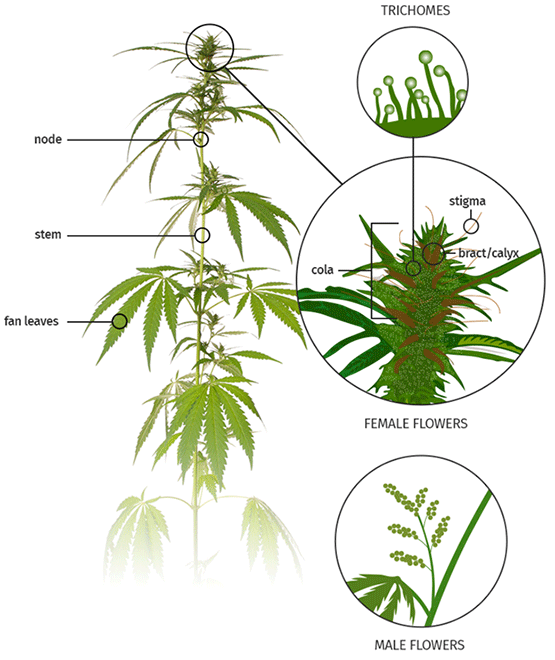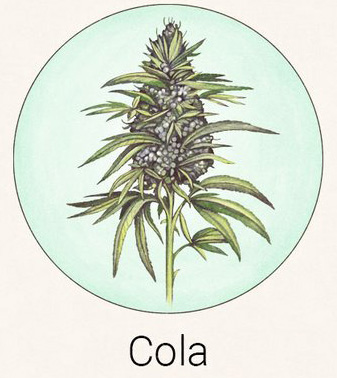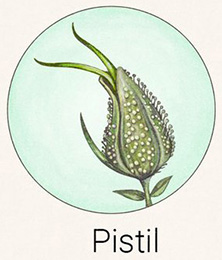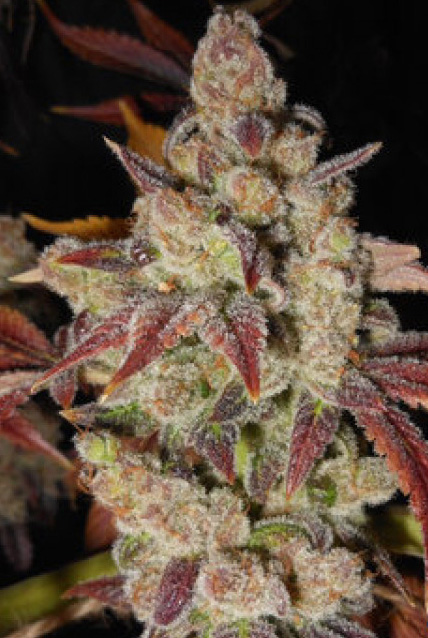Cannabis anatomy
The parts of the plant

Cannabis plants can be male, female, or both (hermaphrodite), but what’s in your stash jar now are the flowers of a female.
Female plants produce the large resin-secreting flowers that are trimmed down to round or pointed buds while males produce smaller pollen sacs near the base of the leaves. The male plants pollinate the females to initiate seed production, but the potent flowers we consume come from the seedless female plants, called sinsemilla, which grow large cannabinoid-rich buds while without seed.
Growers can ensure the sex of their plants by growing clones or the genetically identical clippings from a parent strain. Feminized seeds are also made available through a special breeding process.
Cannabis flowers have unique and intricate formations and grow on long skinny stems with large, fan leaves extending from their nodes. Clusters of buds (colas) grow tightly together along the budding sites of lower branches. The main apical bud forms at the plant’s very top.


Stigma and pistil
The pistil contains the reproductive parts of a flower, and the vibrant, hair-like strands of the pistil are called stigmas. They serve to collect pollen from males. The stigmas of the pistil begin with a white coloration and progressively darken to yellow, orange, red, and brown over the course of the plant’s maturation. They play an important role in reproduction, but add little to the flower’s potency and taste.
Bract and calyx
A bract encapsulates the female’s reproductive parts. They appear as green tear-shaped “leaves,” and are heavily covered in resin glands which produce the highest concentration of cannabinoids of all plant parts. The calyx is a translucent layer over the ovule at a flower’s base.

Trichome
It’s hard to miss the blanket of minute crystal resin on a cannabis bud. This resin is secreted through translucent, mushroom-shaped glands on the leaves, stems, and calyxes. Trichomes were originally developed to protect the plant against predators and the elements.
These clear bulbous globes ooze aromatic oils called terpenes as well as therapeutic cannabinoids like THC and CBD. The basis of hash production depends on these trichomes and their potent sugar-like resin.